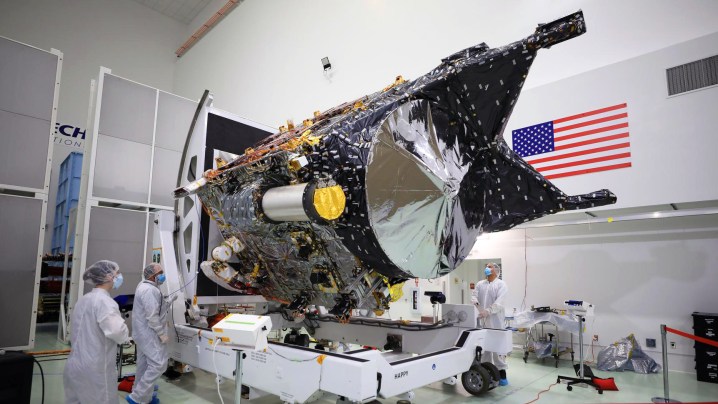An experimental test of laser communications riding along with the Psyche mission has sent back its first data, in a demonstration of the use of laser communications for deep space missions. The Deep Space Optical Communications, or DSOC experiment, is attached to the Psyche spacecraft, which is currently heading toward an asteroid in the main belt between Mars and Jupiter following its launch last month.
Communications for NASA deep space missions are handled by the Deep Space Network, a network of antennae at three sites around the world that primarily use radio. But laser communications could offer 10 to 100 times as much bandwidth, so NASA wants to experiment with using this technology in situations like transferring science data.

DSOC transmitted test data from nearly 10 million miles away on November 14, sending it via laser to the California Institute of Technology’s Palomar Observatory in San Diego County, California. This transmission is referred to as the mission’s “first light.”
“Achieving first light is one of many critical DSOC milestones in the coming months, paving the way toward higher-data-rate communications capable of sending scientific information, high-definition imagery, and streaming video in support of humanity’s next giant leap: sending humans to Mars,” said Trudy Kortes, director of technology demonstrations at NASA, in a statement.
The test is more difficult than using radio waves for communication, because radio waves spread out over a large area as they travel, making them easier to pick up. With laser communications, there is a narrow beam so the spacecraft and ground facilities have to be carefully aligned.
“[The test was the first to fully incorporate the ground assets and flight transceiver, requiring the DSOC and Psyche operations teams to work in tandem,” said Meera Srinivasan, operations lead for DSOC at NASA’s Jet Propulsion Laboratory. “It was a formidable challenge, and we have a lot more work to do, but for a short time, we were able to transmit, receive, and decode some data.”
The DSOC experiment will continue for another two years, primarily using test data, but potentially sending back data from the Psyche spacecraft as well (Psyche is also equipped with traditional radio communications, so this would be purely a test of the functionality). If the system proves reliable, laser communications could help missions send large amounts of science data back to Earth in the future.
“Optical communication is a boon for scientists and researchers who always want more from their space missions, and will enable human exploration of deep space,” said Dr. Jason Mitchell, director of the Advanced Communications and Navigation Technologies Division within NASA’s Space Communications and Navigation (SCaN) program. “More data means more discoveries.”



